|
John Tyman's Cultures in Context Series Torembi and the Sepik A Study of Village Life in New Guinea |
|
Topic No. 16: Village Markets ~ Photos 288 - 331 |
|
John Tyman's Cultures in Context Series Torembi and the Sepik A Study of Village Life in New Guinea |
|
Topic No. 16: Village Markets ~ Photos 288 - 331 |
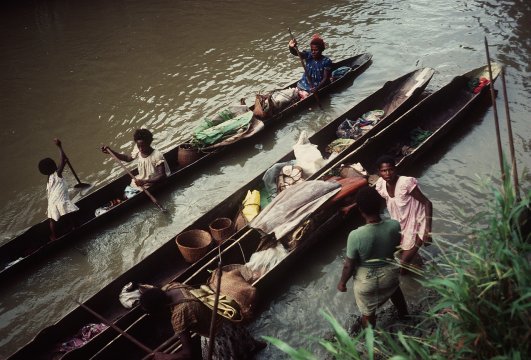 |
| 291. The Sepik people travel upstream, in dugout canoes. They tie these to posts stuck in the mud at the bottom of the bank, and climb to the market area above. |
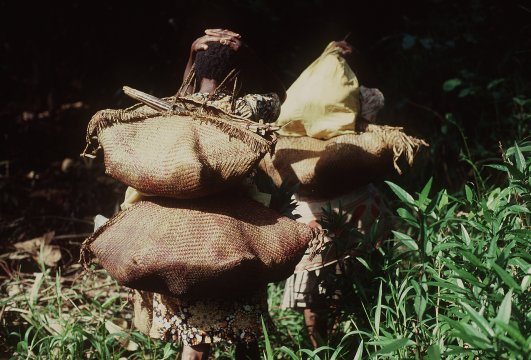 |
| 292. The women from Torembi walk in, carrying their produce on their backs in bilums. It took them an hour to get there. |
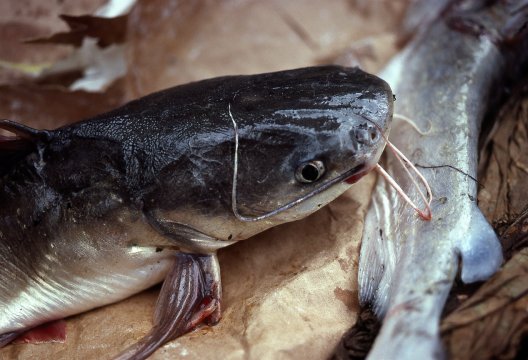 |
| 293. There were a few whole fish available then, but most were cut into small pieces…since you can’t give change when you are bartering. |
 |
| 294. There were also a lot of shrimps … arranged neatly in piles which in size on that day were considered equivalent in value to a block of sago powder. |
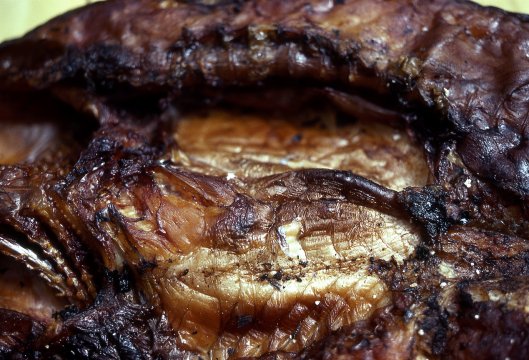 |
| 295. The greater bulk of the fish on offer, however, had been smoked and dried…giving it a longer ‘shelf life’ in a hot wet climate. |
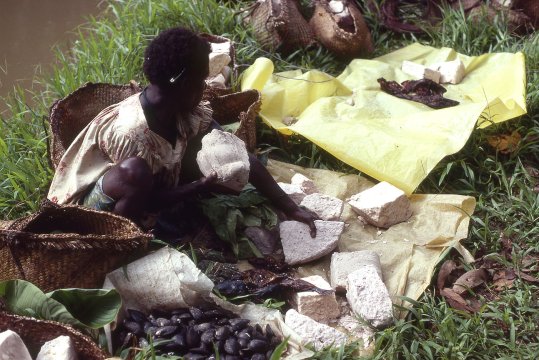 |
| 299.This is not a picture of a woman selling sago but of a woman from the Sepik who had already exchanged some of her shellfish for blocks of the starchy foodstuff from Torembi. |
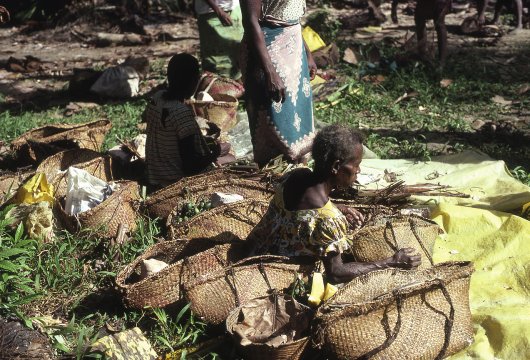 |
| 303. By late morning when trading was over, the women packed up their gear. Those from Torembi packed everything in bilums, and carried these home on to their backs. |
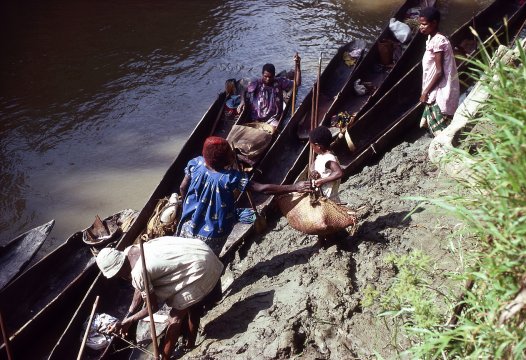 |
| 304. The Sepik people clambered back down the bank, slipping and sliding, loaded their canoes and set off downstream to their homes on the Sepik. |
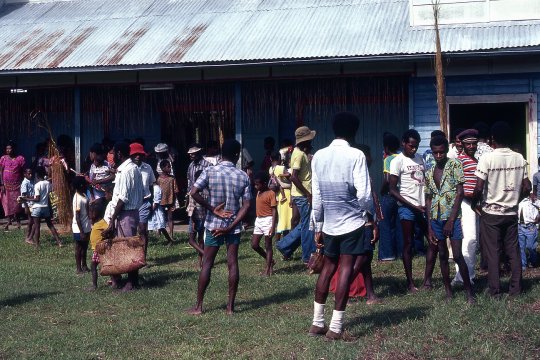 |
| 308. Sunday’s market, held in Torembi itself, was very different. It did not involve people from the Sepik but serviced villages close to the mission. |
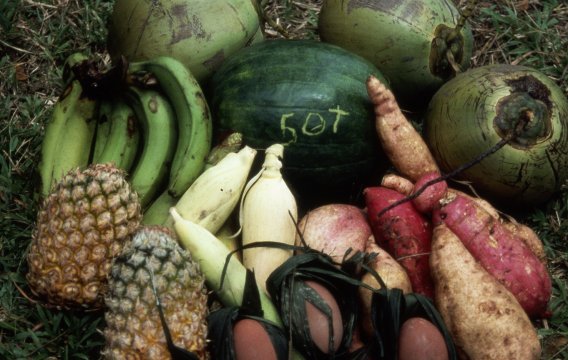 |
| 309. All of these have their own sago, and gardens too, so they use the Sunday market to make a little money, selling their surplus produce to those who are short of food or can afford to buy more. |
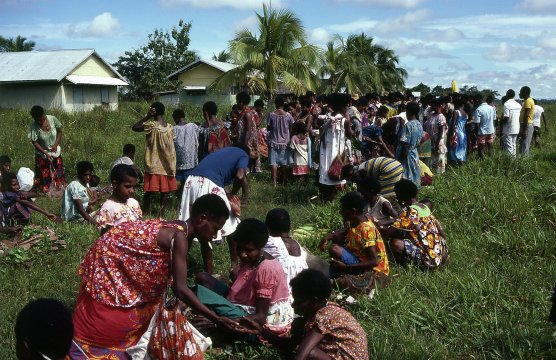 |
| 311. After the service, the congregation wandered over to an area near the airstrip, where they joined a group who hadn’t been to church…all of them dressed in their Sunday best. |
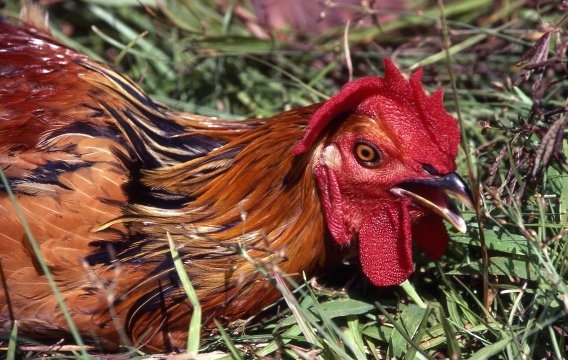 |
| 312. In addition to the fruit and vegetables on offer there were also a few chickens … old ones, destined for the pot. |
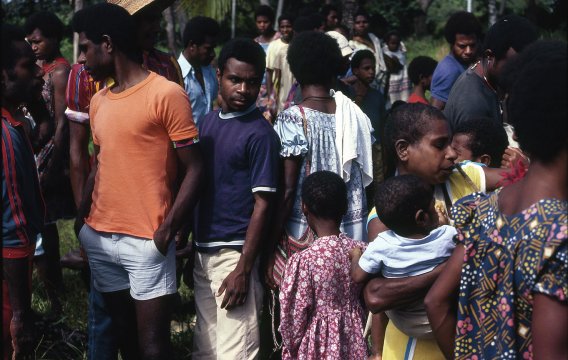 |
| 313. The market was important socially as well as commercially, with time to talk with folk from other villages. This in large part explained the presence of a surprisingly large number of men. |
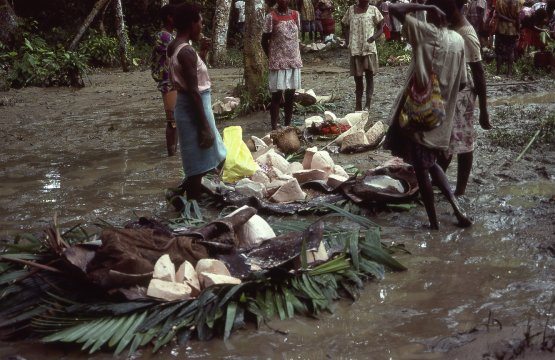 |
| 318. They bargained hard still, but since there was a surplus of fish this time, they got a better deal. The only problem was keeping things dry…or at least above water! |
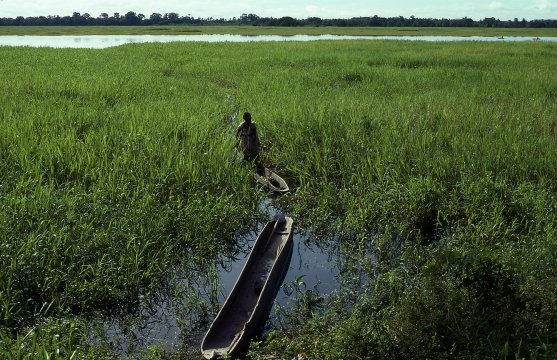 |
| 319. I also visited Korogo that year, the site of the Tuesday market: but it had ceased to function. There was a lot of weed but no trading. |
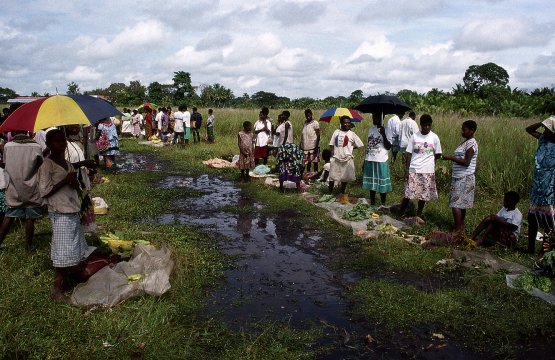 |
| 321. The condition of the Sunday market at the Mission bore witness to recent major flooding. There was a lot of water on the runway. |
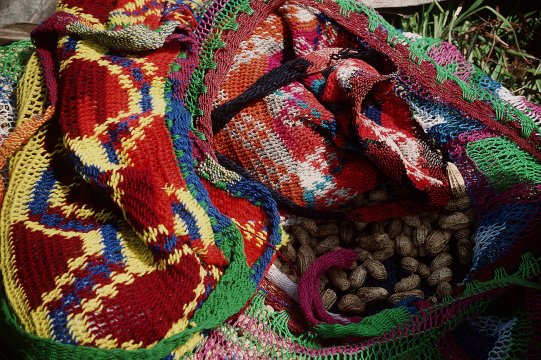 |
| 322. There were fewer vegetables for sale, and the piles indicating the amount you could buy for 10 toea were smaller than before … though peanuts had been added to the list. |
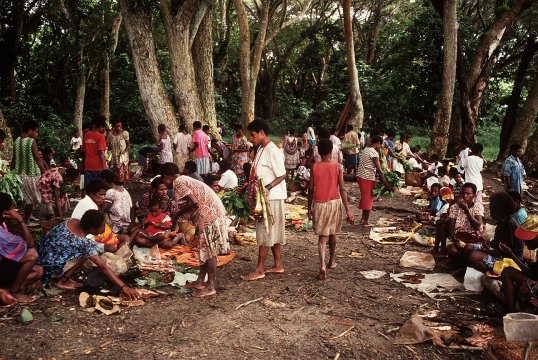 |
| 324. The market at Korogo, in contrast, was booming and had regained its status as a major trading centre. |
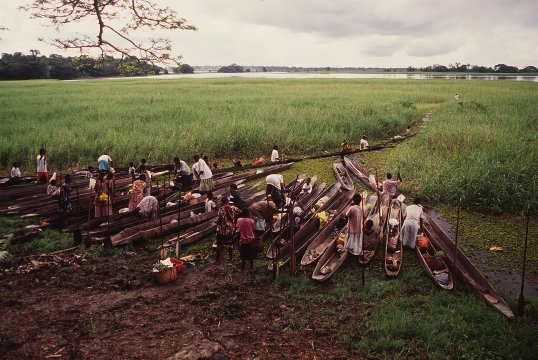 |
| 325. The river channels were open once again, and women from several villages on the Sepik were able to trade here as they had in the past. |
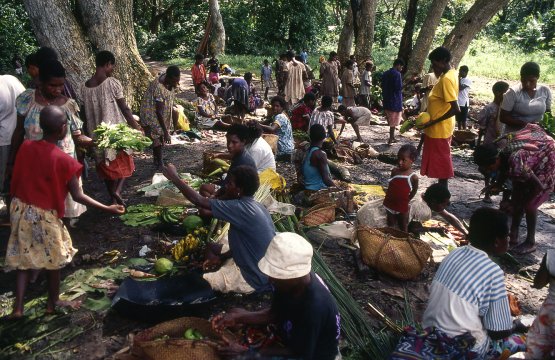 |
| 326. As usual, the produce was spread out on the ground in the shade of some large trees and the women ran the show … though there were a few male spectators. |
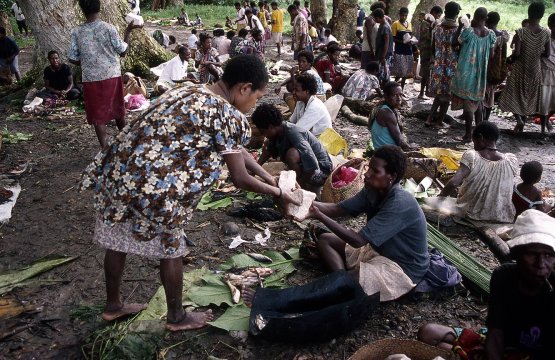 |
| 327. The Torembi region had been badly flooded not long before this so its people had been unable to collect much sago: and since little sago was available it was expensive. |
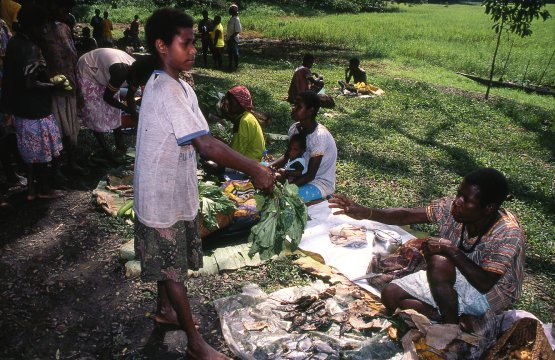 |
| 328. Most of the women with fish to trade set up shop on the side of the clearing closest to the billabong. |
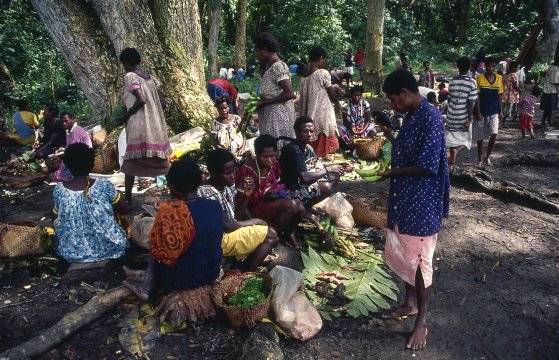 |
| 329. The women from Torembi displayed their wares on the other side of the market place closest to the bush. |
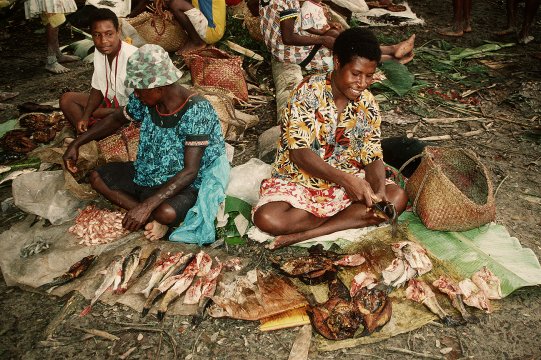 |
| 330. Though the volume traded was less, a wide variety of vegetables were available. In contrast there was a surplus of both fresh and dried fish. |
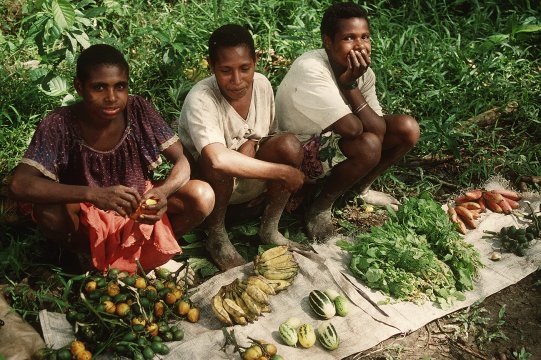 |
| 331. So it was the women from Torembi who held the upper hand this time. This is how the laws of supply and demand work world-wide. (Also see video extract numbers 26-28) |
![]()

![]()
Back to
Cultures in Context Intro: Photos & Recordings
![]()
Text, photos and recordings
by John Tyman
Intended for Educational Use
Only.
Copyright Pitt Rivers Museum,
Oxford University, 2010.
Contact Dr.
John Tyman for more information regarding licensing.
![]()
Photo processing, Web page layout,
formatting, and complementary research by
William Hillman ~ Brandon, Manitoba
~ Canada
www.hillmanweb.com